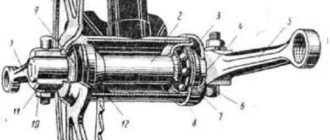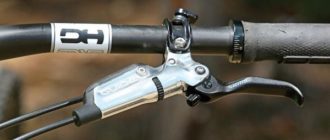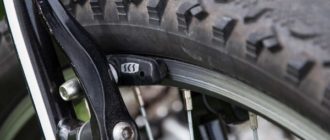The seatpost (or, as it is also called – “verb”) is an essential element of the bike – with its help you can adjust the angle and height of the seat on the bike. There are several types of seatposts, and in this article we will talk about a carbon seatpost, whether it makes sense to use it, as well as the pros and cons of the part made of this material.
What you need a carbon seatpost for
The seatpost is a tube on which the bicycle seat rests. It allows the frame to interact with the saddle. The better the cyclist adjusts the angle and height of the seat with the seatpost, the more comfortable the fit and the more efficient the ride will be.
Carbon seatposts (carbon fiber) are installed, in most cases, on competition bikes because they are quite strong and weigh half as much as aluminum. For athletes in many competitive disciplines, the weight of the bike makes a huge difference. Plus, the carbon verb is successful at dampening vibrations while riding.
Does it make sense to use it
According to experienced cyclists, a carbon seatpost allows you to give any angle of inclination, adjust the shock absorption performance and stiffness in the desired direction. These tubes have low thermal conductivity – they are always warm to the touch. Many people also like the fact that carbon verbs look more stylish and aesthetic, but here it is more of a matter of taste.
As for whether it makes sense to use a carbon seatpost, – here it is worth starting from the purpose of using the bike. If the rider plans to win competitions on it, then without a carbon tube connecting the seat to the frame, you can’t do without it. It is not surprising that professional athletes have carbon pins, frames, and recently also rims with spokes on their bikes.
If your bike is used for riding on asphalted city and country roads, for hiking on smooth surfaces without extreme jumps and pirouettes, it is excessive to have such a tube under the saddle because of its high price. Although, of course, if comfort is the main thing for you, and the cost of the bike does not matter, then riding bikes made of carbon is certainly nice.
On which bikes is best to install a carbon seatpost
According to experts, it is best if the carbon seatpost is installed in the “native”, carbon frame. If you install it to a steel or aluminum frame, you will have to make some fuss:
- sandpaper the inner edge and cut of the seatpost;
- to turn the clamp so that its cut is opposite to that of the seatpost.
It is true that if the carbon verb does not have a special clamp provided by the manufacturer of the bike, the operation with its inversion when installing the seatpost in the carbon frame will also have to be done.
Warning! When installing a carbon seatpost, you must use a special compound to prevent it from sliding. Some craftsmen use a simpler abrasive substance instead of this friction paste: ordinary toothpaste or leather scrub.
One more rule to remember when installing the carbon seatpost: don’t be too zealous when fixing the pin in the seat tube (preferably use a torque spanner) because if you over tighten it the fragile material may crack at the clamping point and then break at the most inopportune moment.
What are the differences between the seatposts made of carbon and aluminum
Aluminum verbs for the bike – quite light, do not succumb to corrosion (unlike steel), but under mechanical action often break without the possibility of recovery.
As for the carbon pins – they are lighter than aluminum and much more durable. In addition, when under the saddle is such a seatpost, riding the bike turns into sheer pleasure. It should be borne in mind that the carbon fiber itself is quite fragile – when tightening the clips detail is important not to overdo it, lest the seat saddle gave a crack.
Many people are discouraged by the price of carbon verb, so previously only professional athletes “broke” on bicycles with such pins. But, given the fact that recently the price of carbon verbs significantly reduced, they are becoming more and more affordable to ordinary fans of cycling.
Pros and cons of carbon seatposts
Quality is of paramount importance when selecting bike components. The same goes for a carbon seatpost. Right now the market offers a wide variety of carbon seatposts made in China. No matter how much you want to save money, this tube is not the place to save money.
Of the disadvantages of Chinese carbon seatposts that many users encounter are:
- Different wall thickness of seatposts and handlebars, which is fraught with breakage in the thinnest places.
- The use of fiberglass in the composition of the stem to make the part cheaper. And you may see carbon fiber on the outside, which, as it turns out, only covers the fiberglass. This can also end up in an unexpected pin breakage at the most inopportune moment, when, for example, you decide to jump a curb or jump a bump.
- The connection of carbon with aluminum is of poor quality. Most often this “suffers” from the handlebar stem, in which there are inserts made of aluminum for screwing screws. In the best case during the operation the paint will peel off, in the worst case a crack will appear, and later the part will simply break.
- Poor quality painting – after some time such paint and varnish begins to crack, which spoils the appearance of the bike, and the carbon fiber is exposed.
From the pluses of these saddles can be called only their affordable price for the average cyclist who likes to make a ride from time to time. Prices for quality carbon seatposts can go up to several thousand dollars.
Of course, some might say that we have exaggerated the colors when describing the disadvantages of Chinese carbon seatposts. No matter how it is, you should understand that the use of a copy of a well-known manufacturer’s product is at your own risk.
But you can use Chinese carbon without fear if:
- You will safely ride on smooth paved paths;
- leisurely stroll on the bike in the park alleys;
- have a low weight.
Choosing Tips
Here are some options for carbon seatposts that have proven to be high quality and most comfortable to ride:
- The FSA K-Force is one of the best options when riding on the road and does a great job of dampening vibrations. The lightweight carbon-fiber pole is made from carbon fiber, with M5 chromium-molybdenum mounting screws giving it special strength.
- The Cannondale SAVE is also a good option for dampening vibration and absorbing big shocks. This effect is created by the flexible tilting of the stem back and forth. But it’s hard to find such saddles.
- The Canyon S13 VCLS – a seatpost with excellent flex, very comfortable, the seat clamp offset is adjustable. Proven VCLS technology provides lateral stiffness and upright comfort that any cyclist will love.
- The CG-R Carbon Seatpost from Specialized is a well-proven variant of the carbon seatpost and provides good bump damping, the forward/backward travel of the cylinder head is very easy to adjust. Due to these indicators, any road becomes smoother, and the ride is easy and comfortable. Particular attention should be paid to this option for riders who have a lot of weight.
- Syntace P6 Carbon HiFlex is a solid seatpost with good adjustment, which is excellent for overcoming obstacles, as well as creating a comfortable experience for the rider when riding on bumpy climbs. That is why most often such a pin can be found in road and mountain bikes. But it has a disadvantage – at maximum insertion it becomes less effective.
Conclusion
If you’re faced with the challenge of choosing a carbon seatpost for your bike or an aluminum alloy one, first evaluate what you’ll be using your bike for. With a carbon seatpost you will get a more comfortable ride, unless, of course, it is bought on the glorious AliExpress. But if your two-wheeler will not be tested for durability, it may be worth settling for an aluminum seatpost and not spending on a more expensive part. It is true that carbon seatposts have become cheaper and therefore are now more affordable, which can’t help but please cycling enthusiasts.











A carbon seatpost is an increasingly popular choice for cyclists looking to upgrade their bike. It has a number of advantages, such as being lightweight and offering increased shock absorption, but there are some drawbacks too. Thanks for this informative article on the pros and cons of investing in a carbon seatpost!